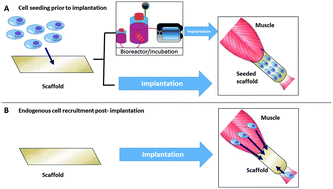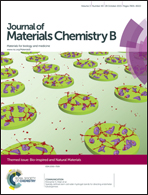Strategies for skeletal muscle tissue engineering: seed vs. soil
Abstract
The most commonly used tissue engineering approach includes the ex vivo combination of site-appropriate cell(s) and scaffold material(s) to create three-dimensional constructs for tissue replacement or reconstruction. These three-dimensional combinations are typically subjected to a period of culture and conditioning (i.e., self-assembly and maturation) to promote the development of ex vivo constructs which closely mimic native target tissue. This cell-based approach is challenged by the host response to the engineered tissue construct following surgical implantation. As an alternative to the cell-based approach, acellular biologic scaffolds attract endogenous cells and remodel into partially functional mimics of native tissue upon implantation. The present review examines cell-types (i.e., seed), scaffold materials (i.e., soil), and challenges associated with functional tissue engineering. Skeletal muscle is used as the target tissue prototype but the discussed principles will largely apply to most body systems.

- This article is part of the themed collection: Bio-inspired and natural materials

 Please wait while we load your content...
Please wait while we load your content...